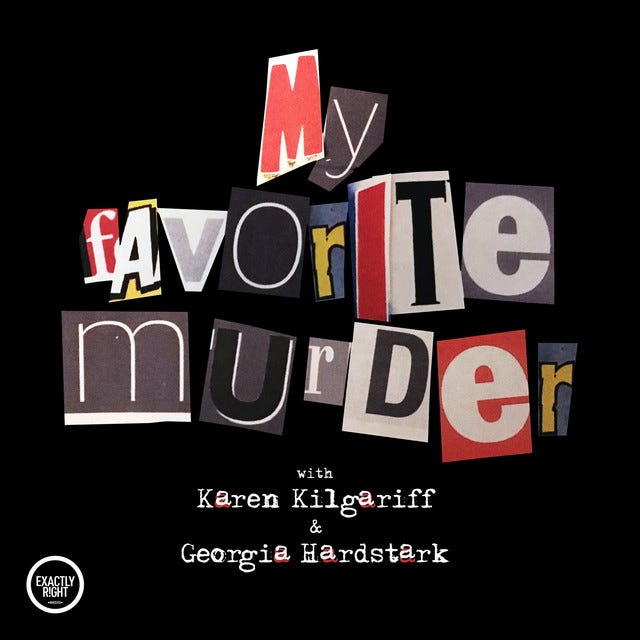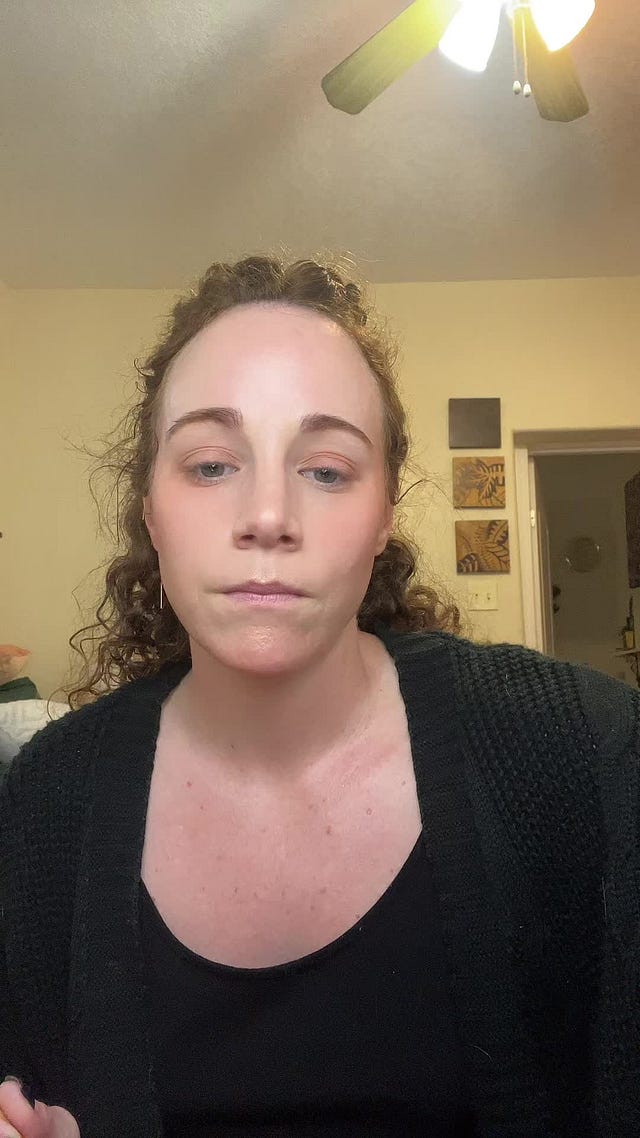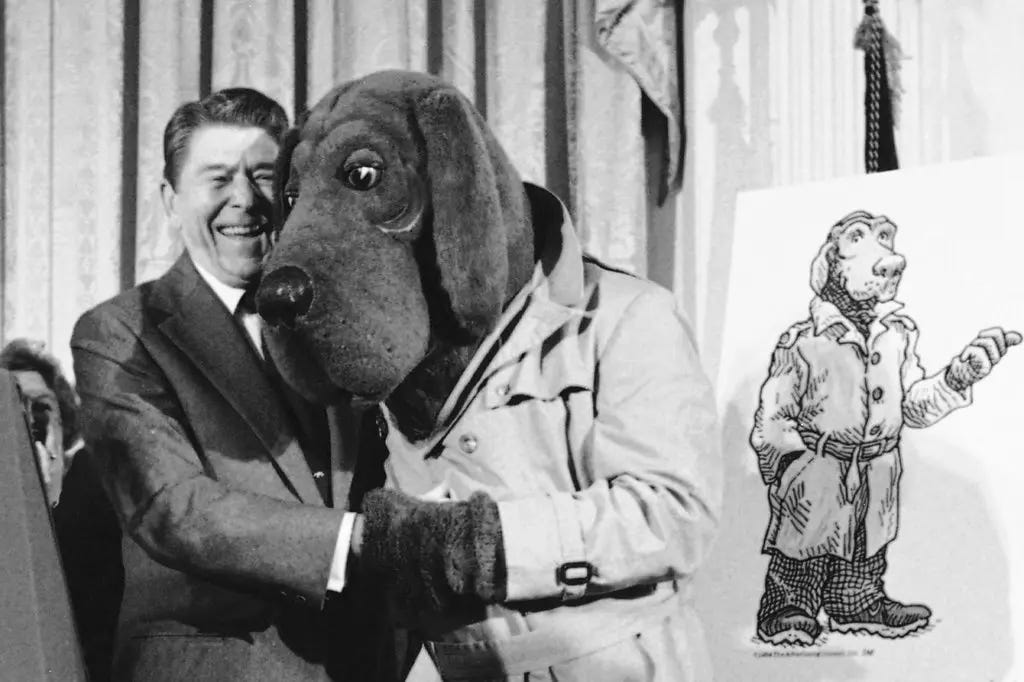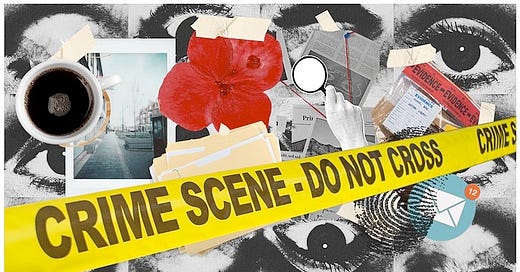This article is one I half-wrote in January 2024 and pitched (unsuccessfully) to several outlets, shortly after Gypsy-Rose Blanchard was released from prison. I was struck by the way the culture immediately lionised Gypsy-Rose as it would a reality TV star, and that led me to looking at the motivation and impact of treating true crime as entertainment.
Frankensteined together with some research on crime podcasts I did back in 2021 and expanded upon this week, I’ve tried to look at this topic broadly, but would recommend further reading (as listed below the article) for those looking for deeper analysis.
In the spirit of the new year, I thought it would be nice to finish it and publish it on substack instead of leaving it to languish in my google drive forever. Hope you enjoy :)
When I was 11, I read an article in People Magazine about kidnapping survivor Jaycee Dugard. Also 11 when she was kidnapped walking to the school bus stop, I was suddenly paralysed with fear about the world I lived in. I made my mother drive me down the street to the bus stop for a year. I had a recurring nightmare-fantasy that a man was climbing up the side of the house to my bedroom window, to take me away in my sleep. Even as my nightmares waned, I slept with a Little Slugger softball bat under my bed for another year, just in case. The bogeyman I imagined never came for me, but that didn’t stop me from looking.
“Hi Crime Junkies!”: such begins every episode of the American podcast Crime Junkie, hosted by Ashley Flowers and Brit Prawat. Each episode is a bite-sized look at various murder cases, kidnappings, and serial killers. The episodes range from a half hour to just under an hour, covering everything from the crime itself to the police investigation, suspects, and theories surrounding the case. The brevity here is arguably part of the appeal—you can follow an entire criminal case in the time it takes to commute to work or run an errand.
The setup of the podcast allows for—and arguably, encourages—a kind of binge-listening that lends itself easily to mindless consumption.
Crime Junkie is aptly named, as the episodes are admittedly addictive. A few hours into one binge listen of the podcast, I found myself clicking mindlessly from one episode to the next, barely registering where one stopped and another began. I listened to one about a murder in Texas as I shopped for groceries. The story of a serial killer in the ’50s accompanied me as I cooked, and I learned about Norwegian kidnappings whilst I folded laundry. The setup of the podcast allows for—and arguably, encourages—a kind of binge-listening that lends itself easily to mindless consumption. Furthermore, this new kind of armchair sleuthing strikes me as covertly exploitative of its subjects, leaving little room for nuanced examinations into specific cases; instead of critical evaluation of inadequate police work or a deeply flawed justice system, there is only a mystery and an answer, wrapped up neatly. The victim, it seems, is collateral—simply the framing device for a narrative centred around their own killer.
The victim, it seems, is collateral—simply the framing device for a narrative centred around their own killer.
If Crime Junkie prioritises the narrative over the victim, My Favorite Murder mines that narrative for all it’s worth. As you may be able to guess from its title, it’s a light-hearted approach to true crime. The hosts, comedians Karen Kilgariff and Georgia Hardstark, look at murder cases from the obscure to the infamous. The pod has developed a cult-like following of fans who call themselves “murderinos”, and the hosts even released a 2019 book, a memoir slash true crime commentary titled “Stay Sexy and Don’t Get Murdered”. In research for a 2021 article I didn’t end up writing1, I listened to over 20 hours of the podcast, where stories of gruesome crimes were discussed in between updates on the hosts’ personal lives and ads for hard seltzer.


There’s something profoundly sinister about sandwiching details of the brutal last few minutes of a person’s life between ads for veggie burgers and mattresses, as you, the listener, make dinner or wash some dishes. I found myself getting confused from episode to episode. Wait, was this the one about the dismembered women found at the beach? Or the child locked in an abandoned barn? I closed my Spotify app forcefully after realising that I was somehow halfway through another episode without any idea who the victim was. I found myself afterwards feeling listless, fatigued, and ill.
True crime is a very lucrative industry2. According to a 2020 Forbes article, My Favorite Murder made a whopping $15 million3 in 2019 alone, from the podcast and its ancillary live shows, book sales, and subscribers. That’s $15 million made off of real cases, and real victims.
Part of the issue is that podcasts aren’t regulated in the way traditional forms of media—TV, radio, television—are. Traditional media is overseen by the FCC (Federal Communications Commission)4, which regulates things like advertising disclosure, misinformation spread, and harmful content promotion5. So if someone wanted to, say, go on a non-regulated dude-bro podcast6 and claim they won an election they lost7 to an audience of more than 14.5 million people8, just before an election they go on to win thanks, in a large part, to that audience9, they could do so without regulatory repercussions.
Because podcasts aren’t regulated and true crime hosts often are not journalists, there is no incentive (beyond personal morals) for hosts to do their due diligence when reporting on these crimes.
On March 5th, 2024, Charlie Shunick, a Missing Person Consultant and the sister of murder victim Mickey Shunick, criticised Crime Junkie for releasing an episode on her sister’s case without asking for her family’s permission. The episode had been posted as exclusive content for their Patreon (paying) subscribers. In a TikTok, Charlie addressed the podcast directly, saying: ‘Do you think they got permission? Of course not. This is called murder for profit. Crime Junkies [sic], you’re not ethical.’10

 Tiktok failed to load.
Tiktok failed to load.Enable 3rd party cookies or use another browser
Crime Junkie took the episode down the next day due to the controversy, but the fact that they had posted the episode to their thousands of paid subscribers (their Patreon membership tiers run from £4.50 to £17.00 a month) shows their allegiance is to profit, not to victims. Though the number of their subscribers on Patreon is not public, co-host Flowers claimed in the wake of a plagiarism scandal11 in 2019 that they had ‘43,500’12 paid subscribers. If Flowers or Prawat were journalists who needed to answer to the FCC, this would be investigated. But because they are non-regulated ‘entertainers’, it’s okay to post content without family permission and re-traumatise victim family members for a profit.
Both Crime Junkie and My Favorite Murder claim to invite their audience to engage, not just with the cases they discuss, but with the broader world of crime and punishment. Every Crime Junkie episode includes the information for Crime Stoppers (a program that allows people to call in case tips anonymously), in case a listener has information on active cases, while My Favorite Murder regularly discusses the importance of personal safety and recognising traits in predators. Everyone wants to be a hero, and everyone thinks they can be a sleuth, so these podcasts provide a way for regular people to become a part of the crime. But do listeners actually want to engage with deeper questions of why people commit crimes, and who crimes are committed against?
Trawling the MFM sub-reddit, I scrolled through post after post about true crime-y things found in the users everyday lives: local, regional true crime stories—a hotel manager breaking into a guest’s room, a hidden freezer found in a open house’s basement— and obsessions with local ‘hometown’ stories. Posts ranged from lighter fare: footage of giant sinkholes, a cafe sign that says ‘the more you weigh the harder you are to kidnap—stay safe, eat cake’ to darker stores. Among offerings for the completely desensitised: home footage of Jeffrey Dahmer, theories on brutal murders and assaults, actual 911 call recordings, ‘looking for an episode about a school shooting!!!!’, and a gleeful murderino going home for the holidays hoping to ‘get’ hometown stories.
Why are these listeners obsessed? Why was it so hard for me to turn off the episodes once I’d started? The appeal lies, perhaps, in turning the mundane into the miraculous: you are not just someone who watches too many murder shows, you are a potential future survivor. Only your wits and knowledge will keep you from being killed by a bevvy of skilled assassins, kidnappers, and sharp-fanged killers.
This mindset has its roots, I believe, in the ‘stranger danger’ moral panic of the ‘80s. The era of McGruff and milk carton kids, Reagan and ‘tough on crime’, had public campaigns of stranger awareness for children that pervaded every modicum of culture. Despite the fact that, in the ‘80s as it is today, violence against children is statistically more likely to come from someone known to them1314, commercials and after-school specials—along with the media amplification of stranger kidnapping stories—made it seem like kid-snatchers were waiting in every shadow.
Journalist Angela Chen noted in her 2016 article ‘Stranger Danger: Rhetoric & Strategies of the “Missing Children” Movement’ that stranger danger activists often skewed statistics to make stranger kidnappings seem more common: ‘though activists knew that the prevailing association of “missing children” was to [stranger kidnapping] cases…the numbers they used included the far more common category of runaway children’.15 These statistics, along with media frenzy around ‘stranger danger’ reinforced the idea that if you were a white, suburban child, a kidnapper was circling your cul-de-sac with a van full of candy at basically any given moment.

It makes sense that at 11, a story about a young white girl being kidnapped would convince me I was next, both because I had severe anxiety and because the ‘stranger danger’ propaganda convinced us that white, middle-class neighbourhoods were the centre of danger. It makes sense that a lot of ‘80s and ‘90s kids would internalise some amount of the ‘stranger danger’ mythos, and gorge on it today with an abundance of true crime narratives. The fear you feel is justified, true crime entertainment wants us to think. Never mind the facts.
It makes sense that a lot of ‘80s and ‘90s kids would internalise some amount of the ‘stranger danger’ mythos, and gorge on it today with an abundance of true crime narratives.
Never mind that you live in an affluent white community with a crime rate of less than 1/200,000. If you found a candy wrapper under your car, it was because a killer left it there to distract you as he approached from behind with a chloroformed rag. You know all their tricks, and their tricks are everywhere. They are everywhere—in car parks, in the shadows. You always check the back seat when you get into your car. You say no when someone with a disabled shopper asks for help getting their groceries in the car. You don’t ask directions, or give them. You are suspicious of everyone. Your postman, your boss, your neighbour, your partner. You’re hyper-vigilant: carry pepper spray everywhere, don’t form relationships with others, don’t talk to anyone. Forget community, these ‘safety tips’ say. You are being hunted! Install a high-tech security system in your house that requires an 8-step-disarming process, and sit in it, waiting for a killer who will never come.
It must be noted that for white women, our imagining ourselves as potential victims of these crimes does not absolve us of our voracious consumption of them, nor does it do anything to prevent crime from happening to actual at-risk communities. Moreover, this paranoia keeps true-crime fans in a suspended state of fear that necessitates further engagement with true-crime media in the name of continual vigilance. In their 1983 American Sociological Review article, ‘Paranoia and the Structure of Powerlessness’, John Mirowsky and Catherine E. Ross describe paranoia as ‘alienation that has progressed from a sense of disconnection to one of persecution’16; to me, this illustrates how true-crime wants listeners to see the world around them.
There is an argument to be made that true crime helps women be critical in a patriarchal society that encourages them to be passive, and true crime fans often point to domestic violence survivors as proof that this hyper-vigilance saves lives. Many women in the My Favorite Murder subreddit credit the podcast with helping them identify the signs of abusive relationships, with the community even giving them the opportunity to leave abusive relationships for good.
While helping domestic violence victims is good thing, this is not the primary function that true crime podcasts or shows aim to fulfil. It is the same reason why crime shows focus on the more salacious aspects of the crime rather than the un-sexy bureaucratic elements—their goal is to entertain, not inform. Most of these podcasts aren’t hosted by investigative journalists, nor are they interested in doing due diligence. They have the ‘exciting’ bits, and that’s all. As Mirowsky and Ross noted in the discussion of their results, ‘although mistrust and paranoia are understandable, and in a sense reasonable under conditions of powerlessness and the threat of victimization…their effectiveness as adaptive strategies is questionable’17. The misconstruction of this genre by its audience as an instruction manual of essentially, how not to get murdered, is predicated on the idea that the listener is likely to be murdered. But true crime’s largest demographic, white women18, are far from the most at-risk group of violent crime.
True crime’s largest demographic, white women, are far from the most at-risk group of violent crime.
Native American populations experience high rates of homicide, and indigenous women are 1.8x more likely to be victims of stalking than non-hispanic white populations. The majority of human trafficking cases happen to vulnerable, high-risk populations - unhoused, undocumented, or abused people. Black women are more likely than white women to die by homicide, and violence against Black women is on the rise. Trans people in the US are over 4x more likely than cisgender people to be the victims of violent crime. As many as 9,992 migrants have gone missing between the Mexico and US border since 2014.
But these victims don’t receive the same public outrage as other true crime victims: women like Elizabeth Short, Jon Benet Ramsey, Laci Peterson, Jaycee Dugard, Gypsy Rose Blanchard, or Gabby Petito19. The public fascination with the murders of young white women was dubbed ‘missing white woman syndrome’ by journalist Gwenn Ifill, as a way to describe media fascination with the abduction and murder cases of young affluent white women gaining far more media attention than crimes against non-white, non-affluent victims.
It leaves a bad taste in my mouth that the only time many missing or murdered people are given attention, it is by entertainment podcasts playing Sherlock. These are not journalists dead set on finding the truth, or even trying to raise awareness about the groups and communities who suffer the most from crime—be it at the hands of individuals or the carceral state—but comedians, entertainers, laughing at someone’s murder over a glass of merlot and pocketing the ad revenue.
Do we actually care about the true crime victims? Do we care about their lives, their families, do we care that we are continually consuming their most terrified moments as our Tuesday night entertainment? Do we dress it up as an interest in the criminal justice system? Do we pass it off as morbid curiosity? It is a story as old as time—a crime, a victim, a criminal—but this time with a self-insert: you play the detective.
Where is the line? Did we pass it when we started folding our laundry as a serial story got pumped through our ears? Or was it when people started thirsting for Ted Bundy on Twitter? When the victims families’ of Jeffrey Dahmer vehemently and publicly opposed Ryan Murphy’s sensationalised account for Netflix, and then everyone streamed it anyway? And did it again this year with the Menendez brothers? Was it when we started thinking we could prevent our own murder by ‘being smart’, as though murder is an intellectual indictment rather than the systemic predation of vulnerable groups? Is it when we pushed Gypsy Rose Blanchard to become a meme, making an icon out of an abuse survivor? Is it our continual usage of people’s trauma for our entertainment, forgetting their names as soon as the next big true crime doc drops?
What is the answer? Is it engaging solely with content approved by victim’s loved ones? Is it to be more critical of our entertainment landscape, and those who profit off of murder? Is it to stop consuming true crime content altogether and read an Agatha Christie novel instead?
Honestly, I’m asking. I am reluctant to slam those interested in the macabre or occult solely for their interests, as I think doing so both amounts to puritanical moralising that encourages conservative talking points, and also because I think fascination with crime is something that has always existed, in some form, throughout human history. However, I do believe we need to be more critical of our cultural bloodlust for true crime—both because the satiation of it comes directly from the pain of the oppressed, and because the sensationalising of these stories often traumatises the families and communities of victims. We need to be aware of how true crime narratives skew our understanding of crime, its victims, and the larger criminal justice system, because these narratives come at a high cost.
Further reading:
Berquist, Emma. “True Crime Is Rotting Our Brains.” Medium, (2023)
Day, Meagan. “How the “Stranger Danger” Panic of the 1980s Helped Give Rise to Mass Incarceration.” Jacobin.com, (2020)
Hassan, Robert. “Digital Alienation.” The Condition of Digitality: A Post-Modern Marxism for the Practice of Digital Life (2020)
Marshall, Sarah, Berquist, Emma. “True Crime with Emma Berquist - You’re Wrong About.” Buzzsprout, 21 Nov. 2021, yourewrongabout.buzzsprout.com/1112270/episodes/9590031-true-crime-with-emma-berquist.
Miles, Jack. “Imagining Mayhem: Fictional Violence vs. ‘True Crime.’” The North American Review (1991) , vol. 276, no. 4, 1991, pp. 57–64.
“Why True Crime Is a White Woman’s Genre — and the Impact It’s Having on Society.” Www.wbur.org, www.wbur.org/hereandnow/2021/10/01/true-crime-white-women.
this is me trying to break the cycle.
Brennan, Mackenzie Joy. ““True Crime” Pays, but Who Pays and Who Gets the Loot?” The Reynolds Center, 10 Apr. 2024, businessjournalism.org/2024/04/true-crime/.
Shapiro, Ariel. “Crime Does Pay: “My Favorite Murder” Stars Join Joe Rogan as Nation’s Highest-Earning Podcasters.” Forbes, 3 Feb. 2020, www.forbes.com/sites/arielshapiro/2020/02/03/crime-does-pay-my-favorite-murder-stars-join-joe-rogan-as-highest-earning-podcasters/?sh=6bf7be3c1377.
“Broadcast News Distortion.” Federal Communications Commission, 11 Feb. 2011, www.fcc.gov/broadcast-news-distortion.
Basically, if podcasts were regulated under the FCC, the FCC would be able to crack down on platforms like Spotify and Apple promoting algorithmically-successful (but harmful) content (cough joe rogan). If Trump’s new FCC chair pick is any indication, more traditional media forms may be headed for deregulation this year.
Dixon, Matt. “Trump Records a 3-Hour Podcast Interview with Joe Rogan.” NBC News, 26 Oct. 2024, www.nbcnews.com/politics/2024-election/trump-records-3-hour-podcast-interview-joe-rogan-rcna177288.
Riccardi, Nicholas. “FACT FOCUS: Trump Repeated Election Lies in His Interview with Joe Rogan. Here Are the Facts.” AP News, 26 Oct. 2024, apnews.com/article/trump-election-lies-rogan-interview-ballots-voting-c8c06eb608c1b1ae8ca0e93ec1022b02.
Carman, Ashley. “Spotify Reveals Joe Rogan’s Podcast Numbers.” Bloomberg.com, 21 Mar. 2024, www.bloomberg.com/news/newsletters/2024-03-21/spotify-reveals-podcast-numbers-for-joe-rogan-alex-cooper-travis-kelce.
“Young Men Helped Trump Retake the White House—a Trend Years in the Making.” NPR, 12 Nov. 2024, www.npr.org/2024/11/12/nx-s1-5181804/young-men-helped-trump-retake-the-white-house-a-trend-years-in-the-making.
“TikTok - @shunickmissingpersons.” Tiktok.com, 2024, www.tiktok.com/@shunickmissingpersons/video/7342879255510027566?_t=8sfyZm4K3NZ&_r=1. Accessed 31 Dec. 2024.
Quah, Nicholas. “A Plagiarism Scandal Shakes up the True-Crime Podcast World.” Vulture, 23 Aug. 2019, www.vulture.com/2019/08/crime-junkie-podcast-plagiarism-scandal.html.
Spangler, Todd, and Todd Spangler. ““Crime Junkie” Podcast Host Ashley Flowers Responds to Plagiarism Allegations.” Variety, 15 Aug. 2019, variety.com/2019/digital/news/crime-junkie-podcast-ashley-flowers-plagiarism-1203302072/.
“Keeping Children Safe: Rhetoric and Reality.” Juvenile Justice Journal, ojjdp.ojp.gov/sites/g/files/xyckuh176/files/jjjournal/jjjournal1598/safe.html.
“Crimes against Children Spotlight: Child Abductions - Known Relationships Are the Greater Danger.” FBI: Law Enforcement Bulletin, leb.fbi.gov/spotlights/crimes-against-children-spotlight-child-abductions-known-relationships-are-the-greater-danger.
Chen, Angela. “Stranger Danger: Rhetoric & Strategies of the “Missing Children” Movement.” JSTOR Daily, 16 Mar. 2016, daily.jstor.org/missing-children/.
Mirowsky, John, and Catherine E. Ross. “Paranoia and the Structure of Powerlessness.” American Sociological Review, vol. 48, no. 2, 1983, pp. 228–39. JSTOR, https://doi.org/10.2307/2095107.
Mirowsky, John, and Catherine E. Ross. “Paranoia and the Structure of Powerlessness.” American Sociological Review, vol. 48, no. 2, 1983, pp. 228–39. JSTOR, https://doi.org/10.2307/2095107.
“Why True Crime Is a White Woman’s Genre — and the Impact It’s Having on Society.” Www.wbur.org, www.wbur.org/hereandnow/2021/10/01/true-crime-white-women.
In fact, Gabby Petito’s father has recently started spearheading a TV series called ‘Faces of the Missing’, an effort to bring media attention to cases of missing people in the US, with a particular focus on those typically ignored by the media.
This is a novel that looks at the exploitation of victims and narrativisation of crime through the lens of a fictional murder case (it was one of the best books I read in 2024 and I highly recommend!!)





This is something I've thought a lot about recently, especially as the popularity of true crime has happened before, during and after the 2020 BLM protests. I've experienced friends who are very passionate about true crime acting as if gruesome murder is always waiting around the corner, which stems from these podcasts trying to "teach" how to recognise potential serial killers. I worry it makes (especially white) women think this kind of crime happens more than it does, and engage with the politics of crime and incarceration as if a majority of the police are mind-hunter-style hero homicide detectives.